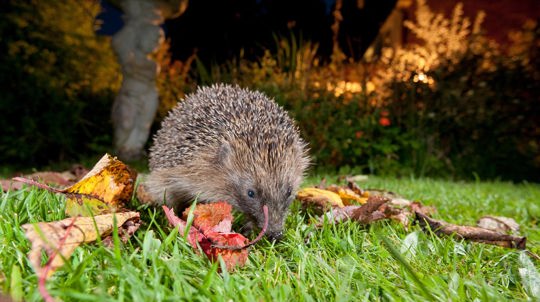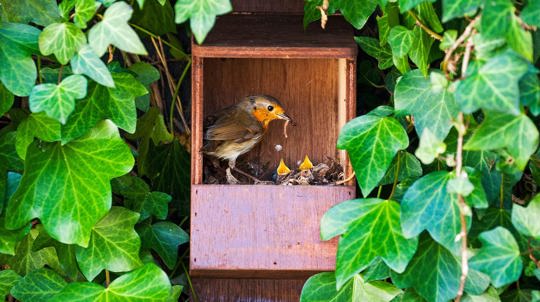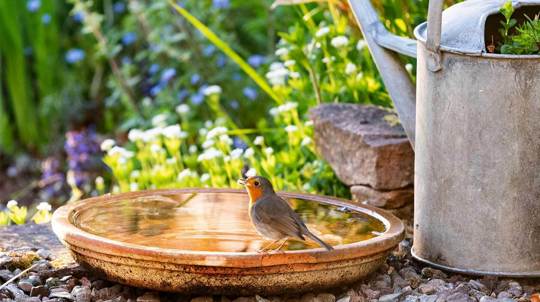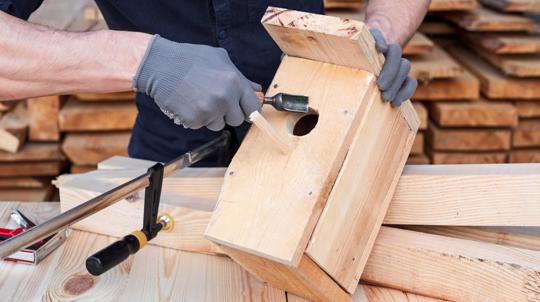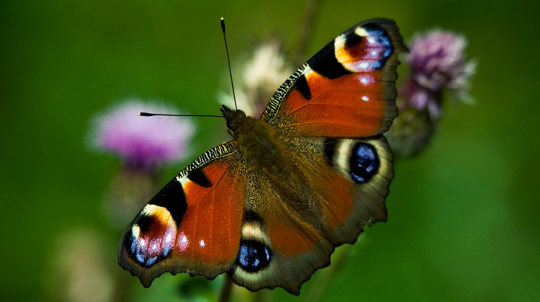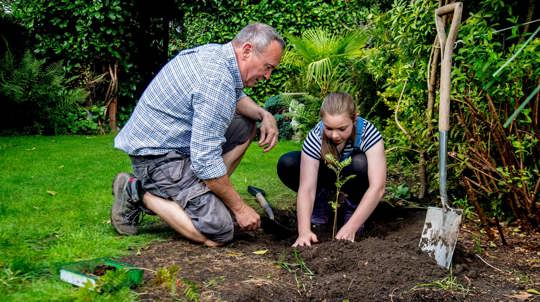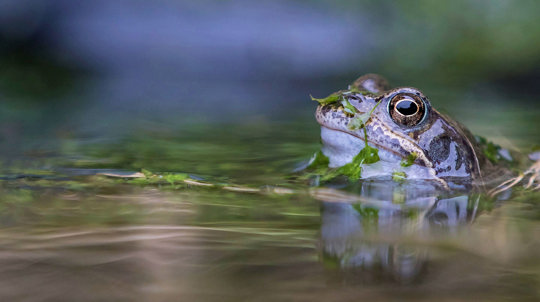Native broadleaf trees are best for UK wildlife as they evolved together and support each other most effectively. Native trees are more resilient and easier to grow and maintain too.
10 best trees to attract birds and other wildlife

Content manager
Our native trees are fantastic for a whole host of wildlife, with flowers, fruit, bark and branches offering different forms of food and shelter throughout the year. You don’t need rolling acres to plant one – many species are suited to gardens and other small spaces, so you can make a difference and watch wildlife appreciating your efforts wherever you are. Here are 10 must have trees that will help boost biodiversity where you live, work, learn or play.
1. Crab apple (Malus sylvestris)
Size: 7-9 metres
Crab apple supports a mix of insects in spring. Blossom is a good source of early pollen and nectar, especially for bees, while fresh new leaves are food for hungry moth caterpillars, including eyed hawk-moth, green pug and pale tussock. Golf ball-sized apples first ripen around October – they’re too tart for most human palates but much loved by mice, vole, fox, badger, song thrush, blackbird and more. Fallen fruits are a favourite of fieldfare and redwing too, especially in harsh winters.
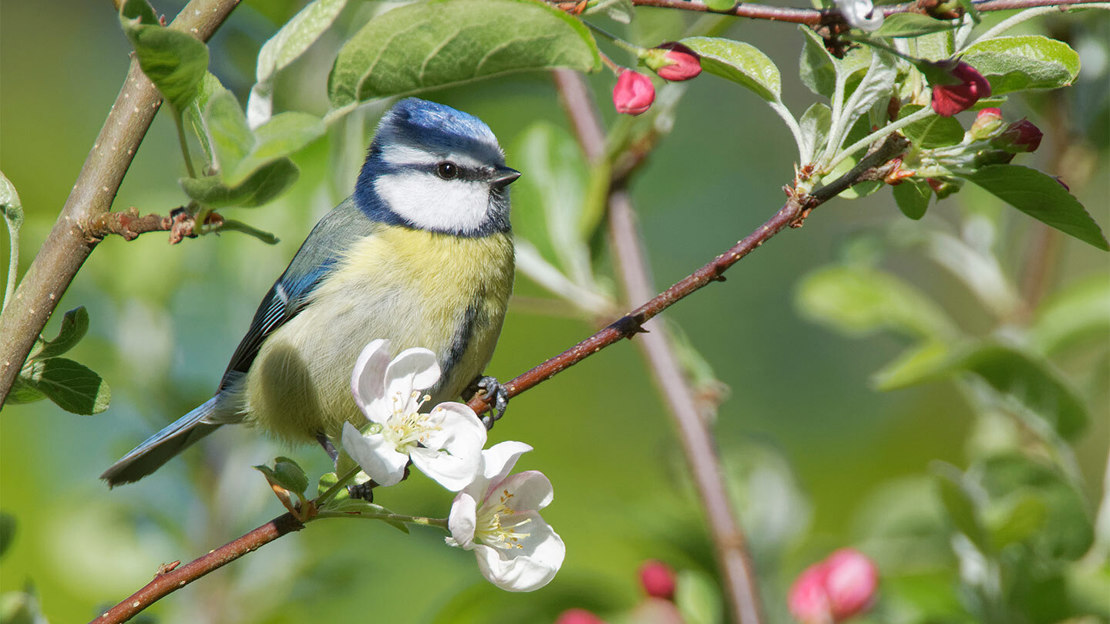
2. Rowan (Sorbus aucuparia)
Size: 8-15 metres
Rowan is enjoyed by wildlife in woods and towns alike and its slender shape make it a perfect tree for gardens. Clusters of delicate creamy flowers offer pollen and nectar for bees and other pollinating insects from May, helping sustain them through spring after apple and cherry blossom peak in April. Caterpillars like the Welsh wave and autumn green carpet munch through spring leaves and in summer, scarlet fruits develop to provide a rich source of autumn food for birds. Blackbird, thrushes, redstart, redwing and waxwing can't get enough.
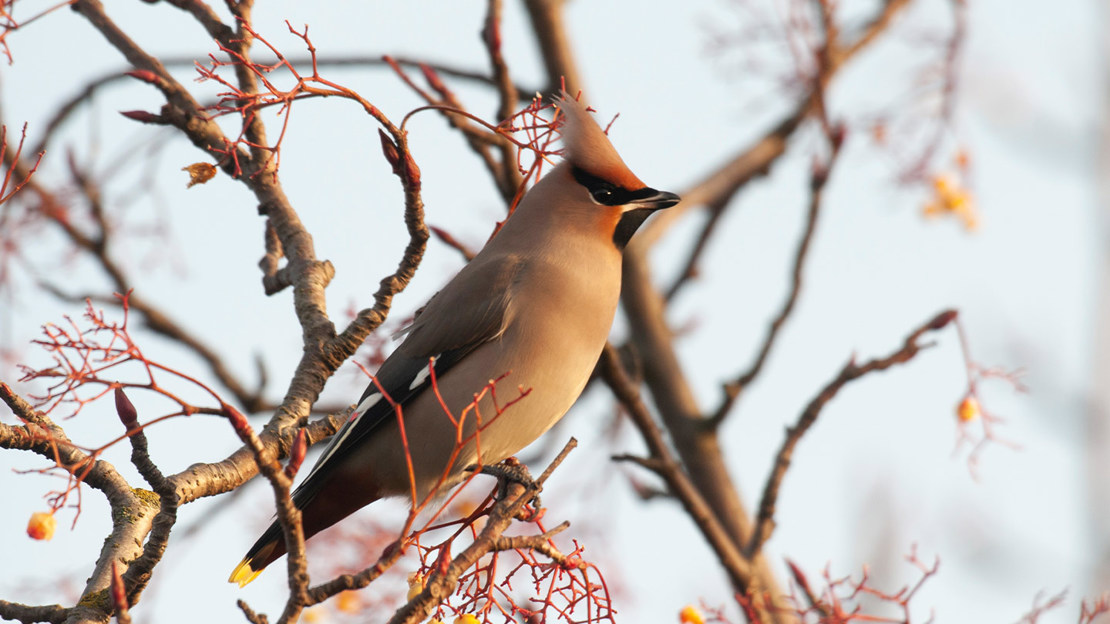
Buy British trees from our shop
We have single trees and tree packs to meet your needs, from wildlife to woodfuel. Delivery is free.
Shop now3. Silver birch (Betula pendula)
Size: 15 - 20 metres
A whopping 300 insect species use silver birch for food and shelter. The leaves are eaten by caterpillars of angle-shades, buff tip, pebble hook-tip and Kentish glory moths to name just a few. Leaves also attract aphids which provide food for ladybirds and other species further up the food chain - this abundance of insect larvae is a feast for chicks during nesting time. Woodpeckers and other birds often nest in the trunk of older trees, while small birds like long-tailed tit, siskin, greenfinch and redpoll enjoy the abundant seeds and insects it hosts.
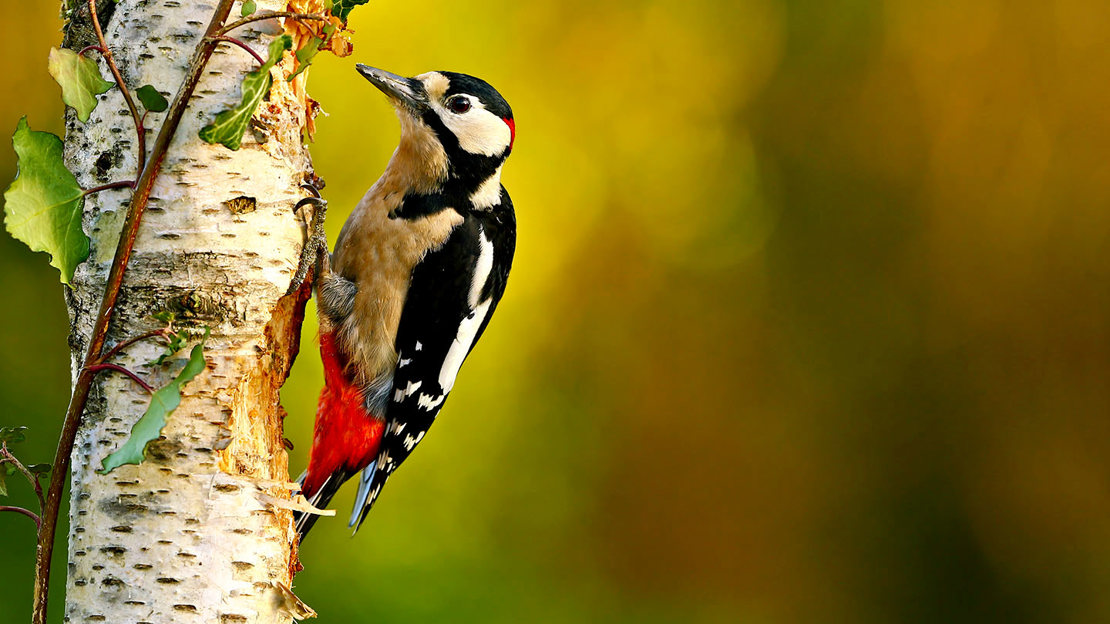
If you have space, planting a range of species that fruit at different times will help sustain birds and other wildlife through tough autumn and winter conditions.
4. Wild cherry (Prunus avium)
Size: 18 - 25 metres
Wild cherry is so good for wildlife it was named for it - the avium in its scientific name refers to the birds that devour its fruits. The ripe cherries of high summer are eaten by blackbird, song thrush and other birds as well as badger, wood mouse and dormouse. Beautiful cherry blossom provides early nectar and pollen for a whole range of insects in spring and the foliage is the main food plant for lots of moth caterpillars, including the cherry bark, orchard ermine and short-cloaked moth.
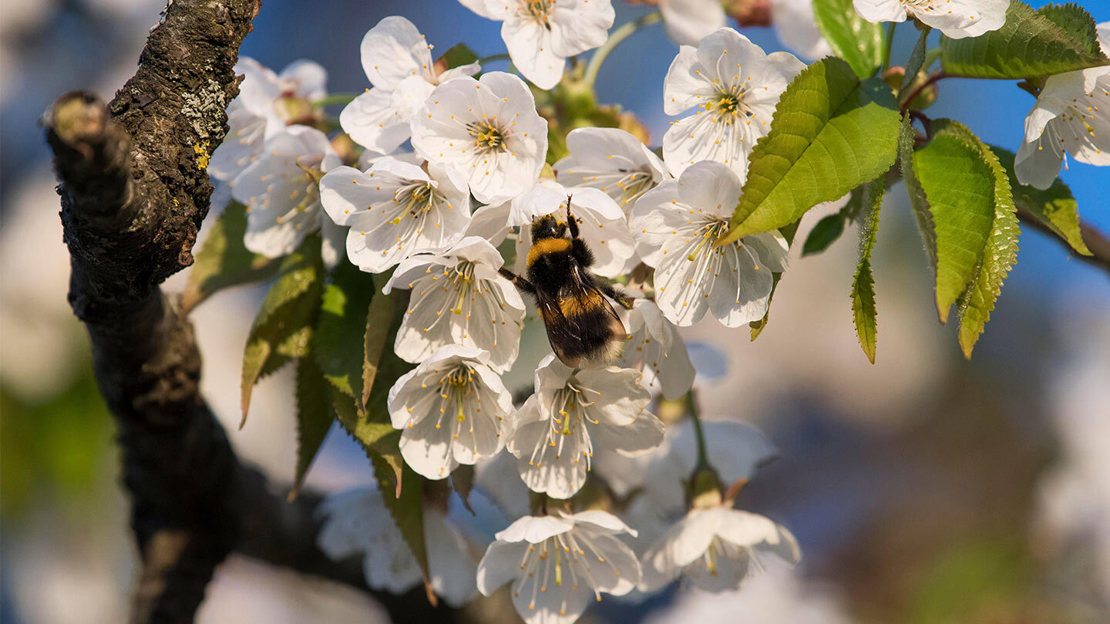
5. Blackthorn (Prunus spinosa)
Size: 6-7 metre
Blackthorn is another early flowering tree which means valuable nectar and pollen for bees in spring. Many moth caterpillars eat its leaves and black and brown hairstreak butterflies lay their eggs in the branches. Blackthorn is great for birds. They can nest among the dense, thorny thickets which offer protection from predators and feast on caterpillars and other insects from the leaves. Juicy black sloes help them through autumn and winter too.
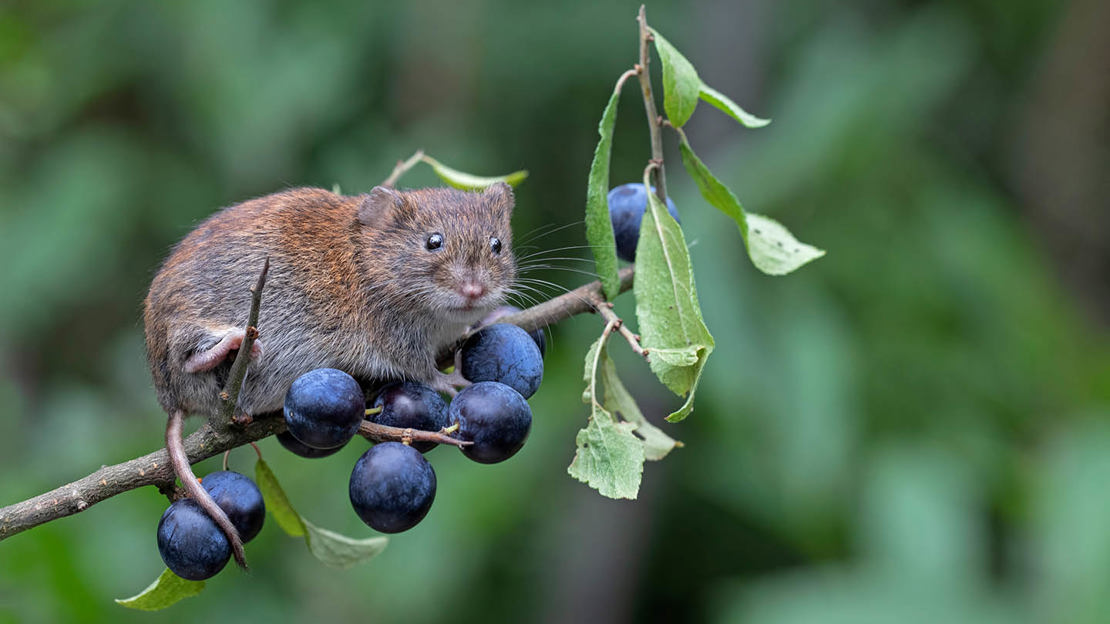
6. Holly (Ilex aquifolium)
Size: 15 metres but can be controlled by pruning
Holly is especially valuable for wildlife in winter, when the thick cover of evergreen leaves gives birds a great place to nest and shelter from stormy weather. Deep, dry leaf litter under the tree can be a cosy spot for toads, hedgehogs and small mammals to hibernate, and long-lasting red berries help birds and small mammals like wood mice and dormice survive the leaner months.
In warmer seasons, small white flowers offer nectar and pollen for bees and other pollinating insects, while caterpillars including double-striped pug, holly tortrix and holly blue nibble the glossy leaves.
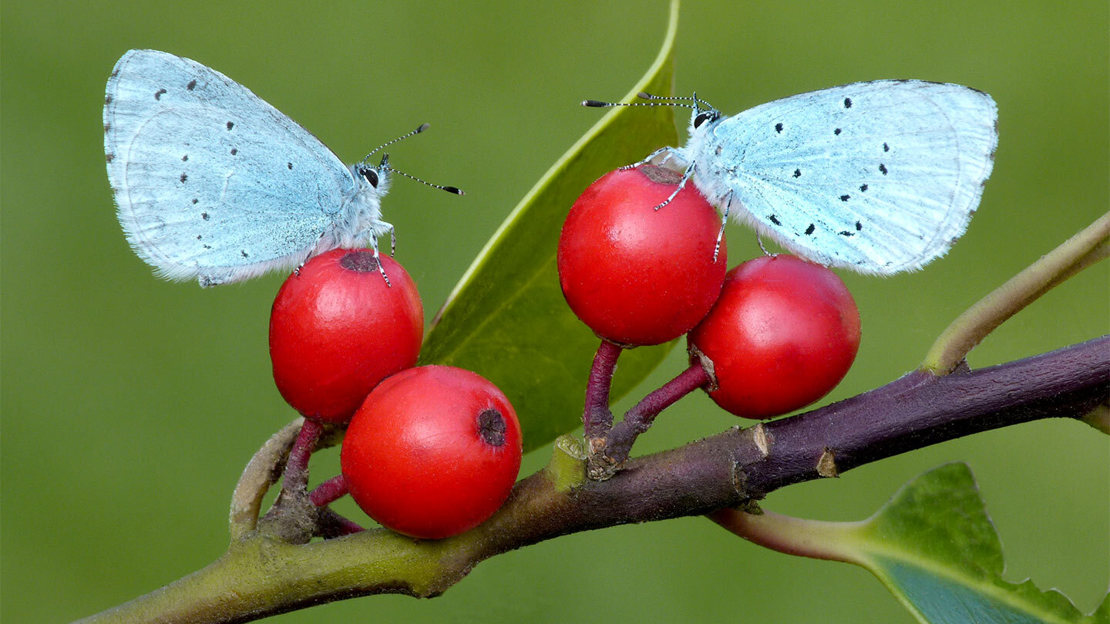
Our native oaks support a colossal 2,300 wildlife species across the UK. Unique habitat features develop with age, so the older the oak, the wider range of wildlife it can support.
7. English oak (Quercus robur)
Size: 20 - 40 metres but can be controlled by pruning
Acorns are a favourite of badger, squirrel, woodpecker, nuthatch and jay. Oak leaves and flowers appeal to a rich supply of insects which in turn bring plenty of birds like wood warbler, redstart and tits. As the tree ages, bats may move in to feed on the insects too. In autumn, soft fallen leaves break down into a rich leaf mould that supports invertebrates and fungi including stag beetle larvae and oakbug milkcap fungus. Mature oaks eventually become gnarly and knotted, with holes and crevices in the bark making perfect nesting spots for pied flycatcher and marsh tit.
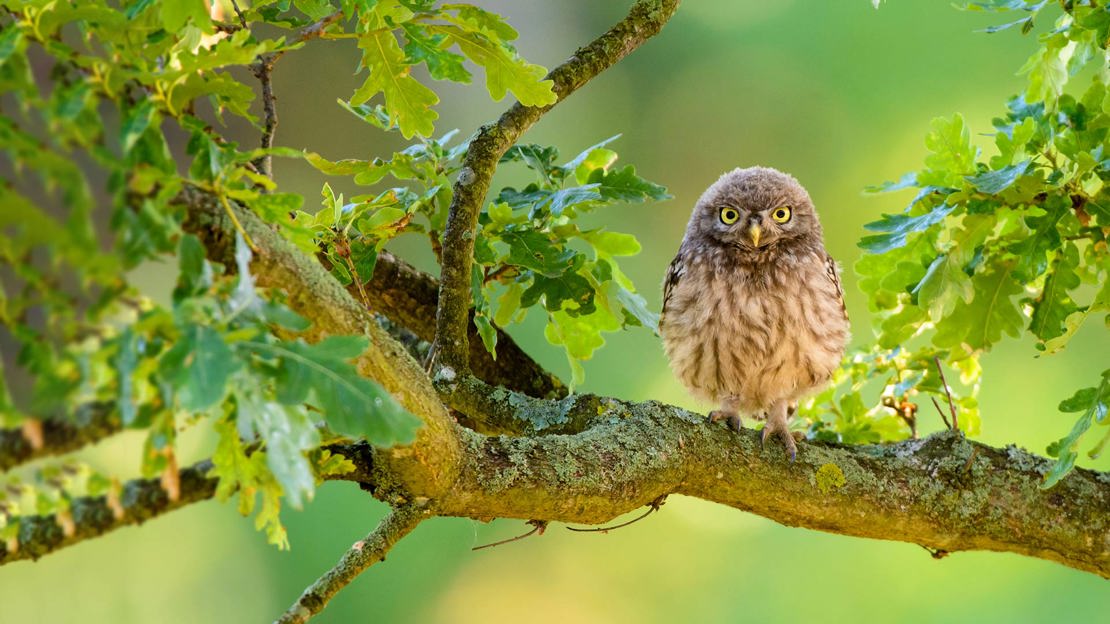
8. Hawthorn (Crataegus monogyna)
Size: 15 metres but can be controlled by pruning
A fantastic tree for wildlife, hawthorn can support hundreds of species. An explosion of blossom from May is a food source for dormice, bees and other pollinating insects. The haws are rich in antioxidants and last well into winter, keeping small mammals and birds such as redwings, fieldfares and thrushes well fed. It is the foodplant of orchard ermine, pear leaf blister and other moth caterpillars. Like blackthorn, hawthorn is fantastic for nesting birds as the dense, thorny branches help keep them safe from predators.
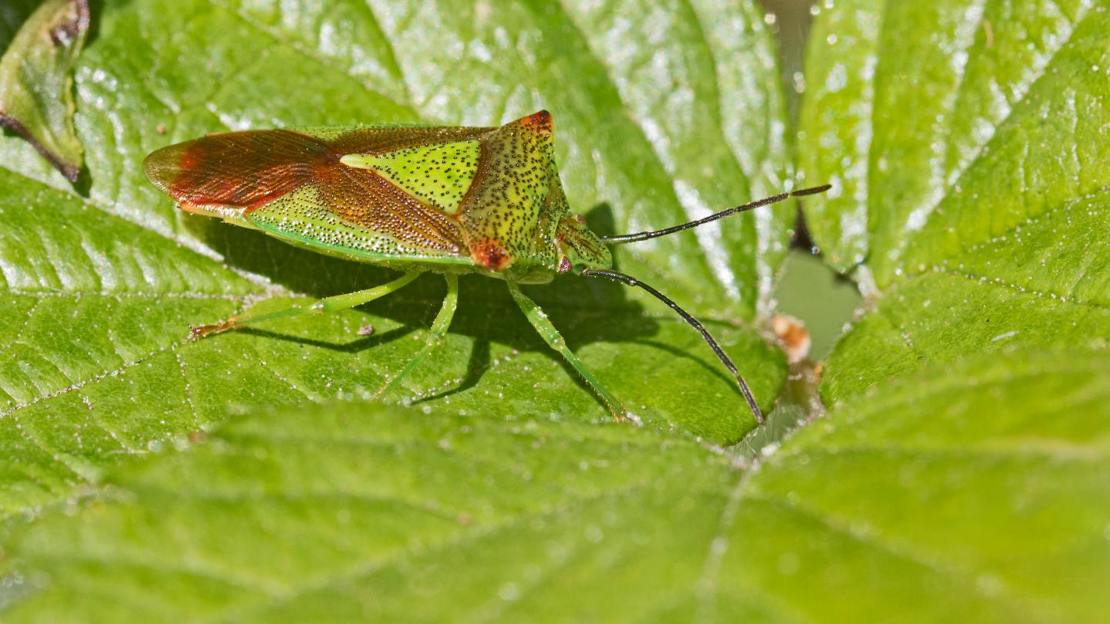
9. Hazel (Corylus avellana)
Size: 10 metres but can be controlled by pruning.
Hazel is famously associated with the hazel dormouse, which eats the nuts and caterpillars from the leaves, including the large emerald, small white wave and nut-tree tussock. Hazelnuts are also eaten by woodpeckers, nuthatches, jays and native mammals like red squirrel, wood mouse and bank vole.
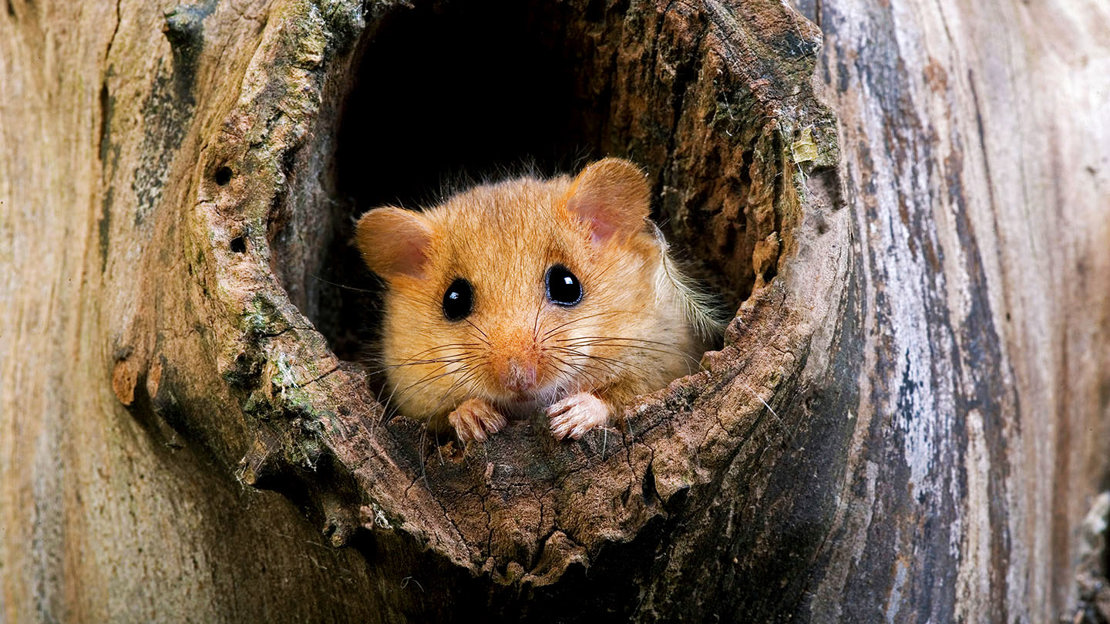
10. Field maple (Acer campestre)
Size: 20 metres maximum but usually smaller.
Field maple is another ideal tree for a wildlife garden. It’s attractive to aphids and their predators, including lots of ladybirds, hoverflies and birds. The leaves are eaten by various moth caterpillars, from mocha and maple pug to maple prominent and small yellow wave. Bees and birds appreciate the flowers’ nectar and pollen, and small mammals eat the large winged fruits.
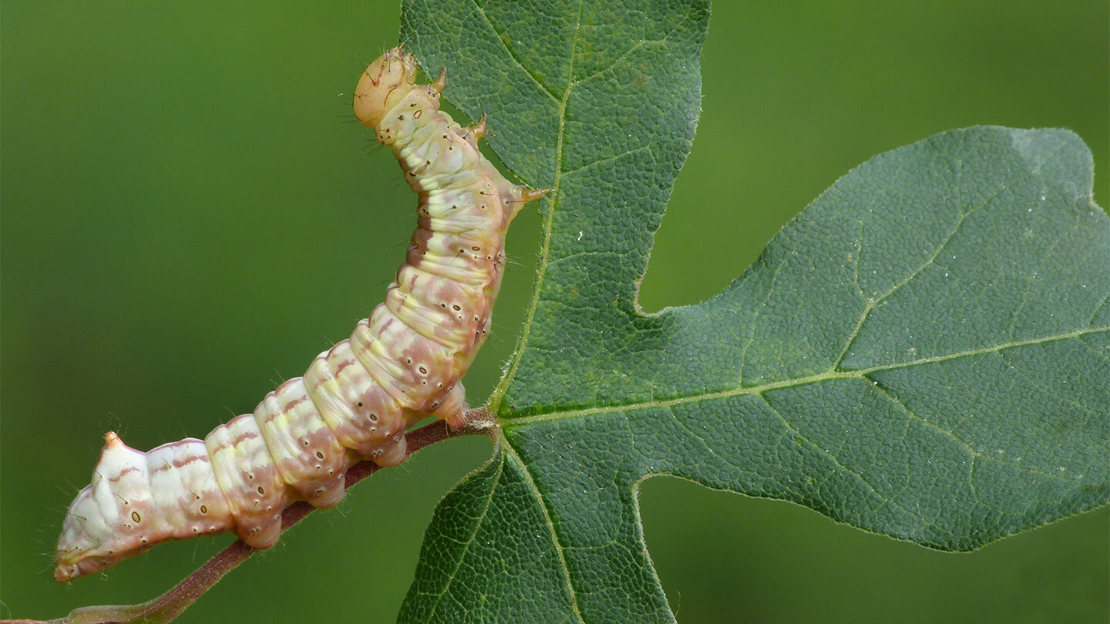
Buy British trees from our shop
We have single trees and tree packs to meet your needs, from wildlife to woodfuel. Delivery is free.
Shop now

